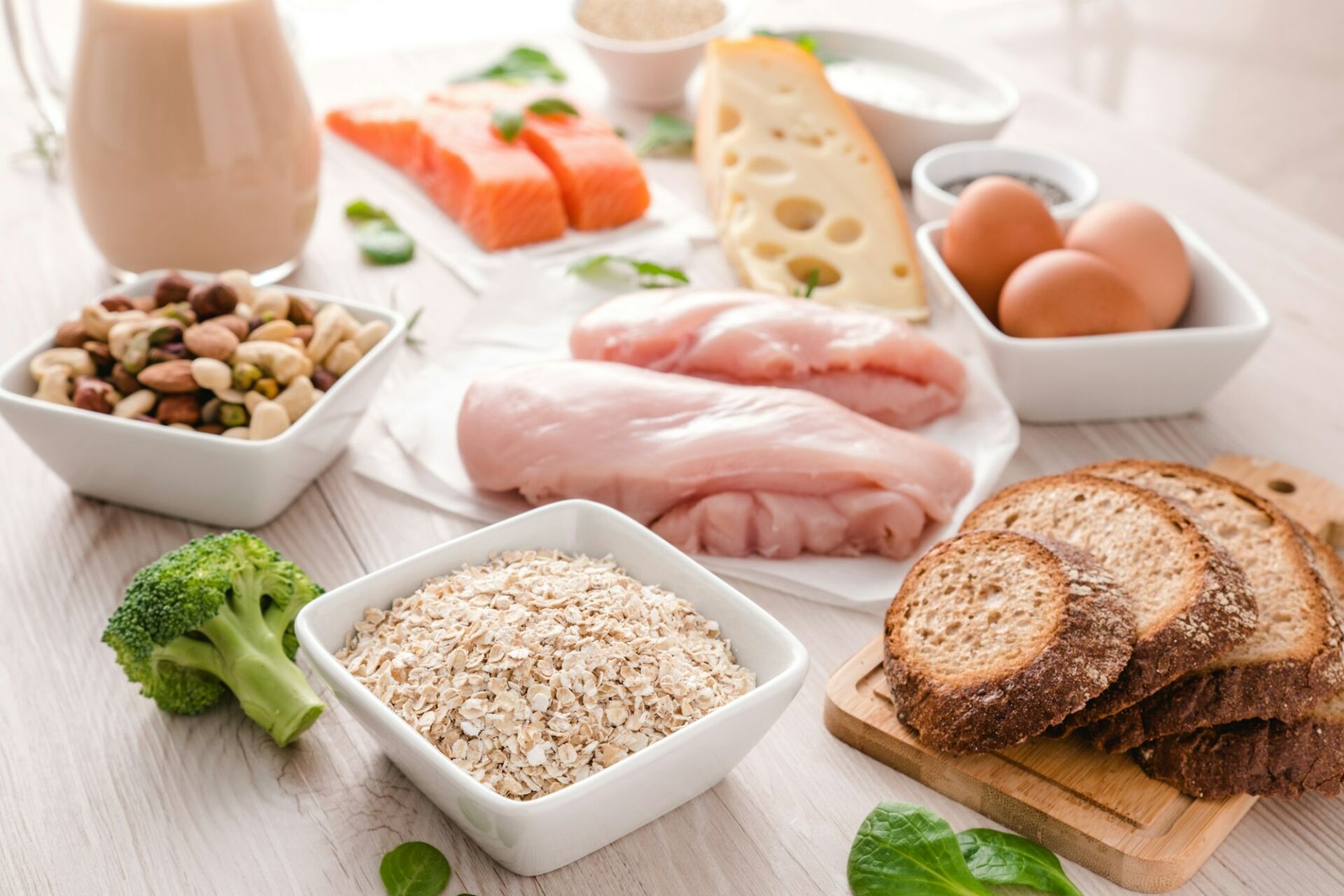Table of Contents
ToggleAre you tired of feeling sluggish and worn out throughout the day? It may be time to take a closer look at your carbohydrate intake. By mastering low-GI carbs, you can boost your energy levels naturally and feel revitalized all day long. In this article, we’ll explore the benefits of incorporating low-GI carbs into your diet and provide tips on how to make the switch seamlessly. Embrace the power of low-GI carbs and say goodbye to those energy crashes once and for all. Let’s dive in and start feeling your best self today!


Understanding the Glycemic Index of Carbohydrates
Carbohydrates play a crucial role in our diet by providing us with energy, but not all carbs are created equal. Understanding the glycemic index (GI) of carbohydrates is essential for making informed choices about what we eat. The GI ranks carbohydrates based on how quickly they raise blood sugar levels after consumption.
Low GI foods, such as whole grains, vegetables, and legumes, are digested slowly, causing a gradual rise in blood sugar levels. These foods are ideal for maintaining steady energy levels throughout the day and can help prevent spikes in blood sugar. On the other hand, high GI foods, like white bread, sugary snacks, and potatoes, are quickly digested, leading to a rapid increase in blood sugar levels. Consuming these foods can result in a crash in energy levels and may contribute to weight gain over time.
By incorporating more low GI foods into your diet, you can better control your blood sugar levels and reduce the risk of developing conditions like diabetes and heart disease. Paying attention to the GI of carbohydrates can also help you make healthier choices when selecting foods at the grocery store or dining out. It’s all about finding a balance that works for you and your lifestyle.
Choosing the Right Low-GI Carbs for Sustainable Energy
When it comes to fueling your body with sustainable energy, choosing the right low-GI (Glycemic Index) carbs is crucial. Low-GI carbs are digested and absorbed slowly, providing a steady release of energy over time, which can help prevent spikes and crashes in blood sugar levels.
Not all carbs are created equal, so it’s important to make smart choices when it comes to selecting low-GI options. Some great low-GI carb choices include:
- Whole grains such as quinoa, bulgur, and barley
- Legumes like lentils, chickpeas, and black beans
- Fruits such as apples, berries, and oranges
- Vegetables like sweet potatoes, broccoli, and leafy greens
These low-GI carbs are nutrient-dense, providing a range of vitamins, minerals, and fiber that are essential for sustained energy levels and overall health. By incorporating these options into your diet, you can fuel your body efficiently and effectively, ensuring you have the energy you need to tackle whatever challenges come your way.
Balancing Low-GI Carbs with Protein and Healthy Fats
Incorporating a variety of low-GI carbohydrates, protein, and healthy fats into your diet is essential for maintaining a balanced and nutritious meal plan. These three components work together to provide sustained energy, promote muscle growth and repair, and support overall health and well-being.
When selecting low-GI carbs, opt for whole grains like quinoa, brown rice, and oats, as well as fruits and vegetables such as sweet potatoes, berries, and leafy greens. These options provide a steady release of glucose into the bloodstream, preventing sudden spikes and crashes in blood sugar levels.
Pairing your low-GI carbs with lean sources of protein like chicken, tofu, and legumes can help regulate appetite, increase feelings of fullness, and support muscle function. Additionally, incorporating healthy fats from sources like avocado, nuts, and olive oil can improve nutrient absorption and contribute to heart health and brain function.
By finding the right balance of low-GI carbs, protein, and healthy fats, you can create a well-rounded and satisfying meal plan that supports your energy levels, fitness goals, and overall health. Experiment with different combinations and recipes to discover what works best for you and enjoy the benefits of a nourishing and sustainable diet.
Incorporating Low-GI Carbs into Your Daily Meals
One simple way to start incorporating more low-GI carbs into your daily meals is by making substitutions in your favorite dishes. For example, try using whole grain pasta instead of white pasta in your spaghetti recipe or swapping out white rice for quinoa in your stir-fry. These small changes can make a big difference in your overall blood sugar levels and energy levels throughout the day.
Another tip for including more low-GI carbs in your meals is to focus on adding more fruits and vegetables to your plate. These foods are typically lower in glycemic index and are packed with essential vitamins and nutrients. Try adding berries to your morning oatmeal, tossing some sweet potato into your salad, or snacking on carrots and hummus for a midday pick-me-up.
Don’t forget about the power of beans and legumes when it comes to . Beans like black beans, chickpeas, and lentils are not only high in fiber and protein, but they also have a low glycemic index. Add them to soups, salads, or as a side dish to help stabilize your blood sugar levels and keep you feeling full and satisfied.
Tips for Staying Consistent with Low-GI Carb Intake
Staying consistent with a low-GI carb intake can be challenging, but with the right strategies, it is definitely achievable. Here are some tips to help you stay on track:
- Plan Ahead: Take some time each week to plan your meals and snacks. This will help you make better choices and avoid reaching for high-GI foods when you’re hungry.
- Choose Whole Foods: Opt for whole grains, fruits, vegetables, and legumes over processed foods. These foods have a lower GI and will help keep your blood sugar levels stable.
- Read Labels: Pay attention to the glycemic index of the foods you’re eating. Look for foods with a GI of 55 or less to help you stay within your low-GI carb goals.
- Monitor Your Portions: Even low-GI foods can cause blood sugar spikes if eaten in large quantities. Keep track of your portion sizes to ensure you’re not overdoing it.
Remember that consistency is key when it comes to managing your carbohydrate intake. By following these tips and staying mindful of your food choices, you can successfully maintain a low-GI diet and improve your overall health and well-being.
Q&A
Q: What are low-GI carbs and why are they important for boosting energy levels?
A: Low-GI carbs are carbohydrates that are digested and absorbed slowly, providing a steady release of energy over a longer period of time. This can help maintain stable blood sugar levels and prevent energy crashes.
Q: How can incorporating low-GI carbs into our diets benefit our overall health?
A: By choosing low-GI carbs, we can improve our insulin sensitivity, reduce the risk of developing type 2 diabetes, and even aid in weight management. These carbs also provide essential nutrients and fiber for optimal health.
Q: What are some examples of low-GI carbs that we should include in our diet?
A: Some examples of low-GI carbs include whole grains like oatmeal, quinoa, and brown rice, as well as legumes like chickpeas and lentils. Fruits and vegetables like apples, sweet potatoes, and leafy greens are also excellent choices.
Q: How can we start incorporating more low-GI carbs into our meals?
A: To start incorporating more low-GI carbs into your diet, try swapping out refined grains for whole grains, adding legumes to soups and salads, and choosing fresh fruits and vegetables as snacks or as part of your meals.
Q: Are there any tips for mastering low-GI carbs and boosting energy levels naturally?
A: Yes, in addition to choosing low-GI carbs, it’s important to balance your meals with protein and healthy fats to further stabilize blood sugar levels. Stay hydrated, get regular exercise, and prioritize getting enough sleep to help maintain energy levels throughout the day.
In Summary
Remember, mastering low-GI carbs can have a big impact on your energy levels and overall well-being. By incorporating these healthier options into your diet, you’ll not only feel more energized, but also avoid the dreaded crashes that come with consuming high-GI foods. So go ahead and start making smarter food choices today. Your body will thank you for it! Stay tuned for more tips and tricks on how to lead a healthier lifestyle. Keep thriving, and remember that you have the power to take control of your health and happiness. Cheers to a brighter, more energetic you!


